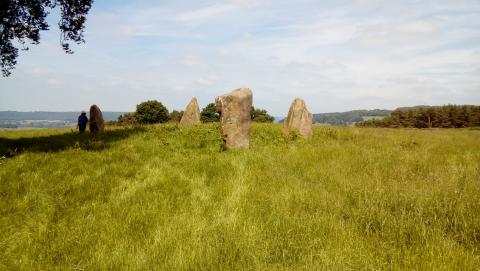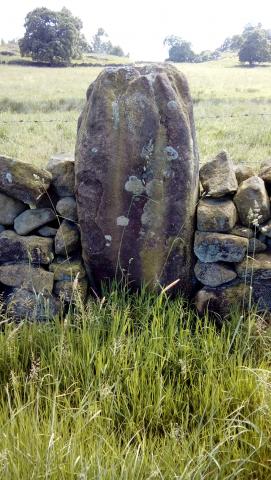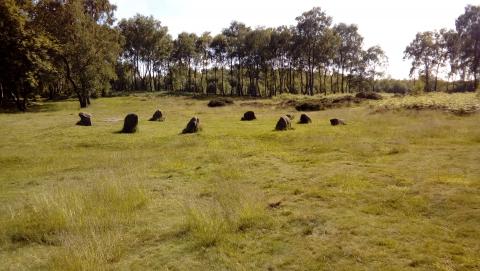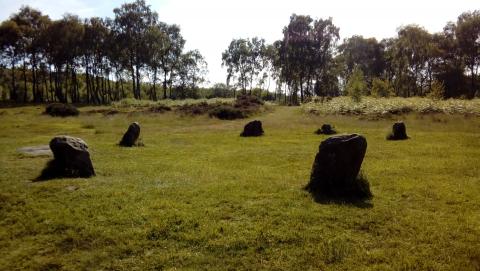Nine Stones, Nine Ladies & Gilgal

Our countryside is littered with ancient stone circles. I visited Derbyshire and called at Nine Stones Close (above and below) and Nine Ladies (bottom). The more observant will note that the former has fewer than nine stones; some may have been pinched for gateposts (third photo) or used as masonry. Alternatively, nine may mean ‘noon’ and could be a clue to the time of day such meeting points were used.


One might be surprised to learn that such monuments appear in the Bible. The word gilgal, which features in Joshua 4-5, probably derives from "circle of stones":
And the children of Israel did so, just as Joshua commanded, and took up twelve stones from the midst of the Jordan, as the Lord had spoken to Joshua, according to the number of the tribes of the children of Israel, and carried them over with them to the place where they lodged, and laid them down there. Then Joshua set up twelve stones in the midst of the Jordan, in the place where the feet of the priests who bore the ark of the covenant stood; and they are there to this day. -Joshua 4:8-9
If our stone circles were centres of pagan worship, then they clearly have nothing in common with Joshua’s, even though they were erected at a similar time. Nevertheless, they may have been meeting places, courts of justice, or commemorations of victory. Many of them, too, ‘are there to this day.’ Sadly, these great reminders of God’s awesome deliverance became centres of apostasy:
Though Gilead has idols— Surely they are vanity— Though they sacrifice bulls in Gilgal, Indeed their altars shall be heaps in the furrows of the field. -Hosea 12:11
Don’t turn reminders of yesterday’s deliverance into tomorrow’s idolatry.


Nine Ladies Stone Circle, Derbyshire.
- Log in to post comments


 Sunday Worship 10.45am & 6.00pm
Sunday Worship 10.45am & 6.00pm